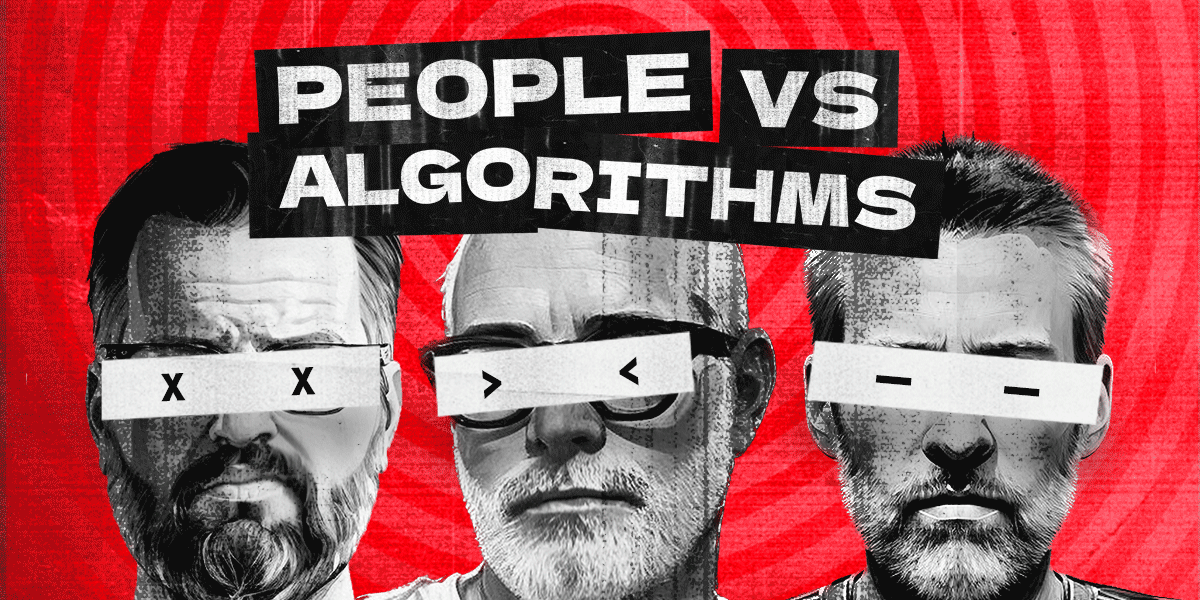The media blame game

Today at 1pm, The Rebooting is holding its first online forum, in collaboration with BlueConic. I’ll be joined in a discussion about the outlook for publisher subscriptions by Bloomberg Media chief digital officer Julia Beizer and Puck chief strategy officer Max Tcheyan. We’re going to address how subscriptions can play a critical role in forging a path to sustainable media business models, as well as getting into the details of mitigating churn, bundling and focusing on ARPU. I’ll also have a View from the Top session with BlueConic’s Will Barker. We’ll make this interactive.
Join us for the hourlong virtual event today, Jan 25, at 1pmEST. (If you can’t make the session, you’ll get a link to a replay afterwards.)
The media blame game
I was always fond of what I called the “autopsy” article format. It would dissect what went wrong when a publisher flamed out. The picture that emerged was usually jumbled, with decisions made that in retrospect were easy to point to as a proximate cause. And yet, we all are formed by our contexts. Morality plays are popular, sometimes true in the specifics, yet wrong in the totality.
The slow-motion collapse of large swathes of the mass media industry is no different. Sudden collapses like Silicon Valley Bank lend themselves to finger pointing, and usually the villains found are those the protagonist telling the story already disliked. The same is happening as a dizzying array of media companies slash workers, trim ambitions and offer uninspiring plans for growth. Some of the villains:
The pivot to performance. Tech companies have been a handy foil for the media industry because, in large part, tech platforms took over the advertising industry. The shift from analog to digital media has been an unmitigated disaster for most sectors of the publishing industry, and increasingly the broader media industry, as tech companies seemingly solved Wanamaker’s dilemma. The biggest ad businesses have deep pools of audience data and the ability to activate that information for one-to-one targeting. That does not describe content publishers. They were bringing a plastic knife to a gunfight. Separating the audience data from the media impression ended up killing many; it just took some time.
The loss of distribution power. The internet has proven that the interface is the commanding heights of the digital economy. Freed from the “artificial” constraints on media production, the internet has produced more content than would have been imaginable a generation ago. Jeff Bezos observed that humans aren’t truth seekers; they’re social animals. And stories are integral to how we make sense of the world. There will always be a ready supply of people to feed content into the algorithmic content mines – and as anyone who got lost in Reels for hours can attest, much of it is very good, especially when combined with algorithmic distribution. In such a scenario, most of the power sits at the interface level because that’s where the algorithmic sorting takes place. Pining for the homepage is a misbegotten hope to reclaim distribution power. Chapeau to The Daily Mail for never giving up on it. It’s somewhat embarrassing that email newsletters, of all things, have emerged as one of the sturdiest distribution channels. I don’t blame Anna Wintour for keeping the sunglasses on for the email meetings.
The loss of focus. Losing distribution power meant publishers lost control of their businesses and relied on audience engineering. So publishers bragged about a ComScore audience that was, if not fake, at least not theirs and rarely loyal. Getting people to click a link on Facebook or Google is not the same as someone seeking you out. That meant not only were publishers often serving advertisers before the audience but they were also serving the needs of algorithmic platforms before the audience. Chasing what’s trending on a viral analytics dashboard isn’t a way to build a brand, or be essential to a defined audience. Business Insider should have remained BI. The unwinding will be painful.
The scale dream. Many publishers raised with a variation of a story that went something like this: People’s attention shifted online, and ad dollars follow eyeballs, so new versions of the legacy publishing empires were to be built. It was plausible enough that venture capitalists ponied up money to fund many perennially loss-making ventures that, for all that I and others have written about them, have never been profitable businesses – not for a day or a month or a quarter, but reliably, year after year. This distorted the market, as what were in effect subsidized businesses made a tough business even tougher. The media industry itself is not in collapse; certain parts of it are, typically those focused on consumer advertising that requires sizable audiences. There are thriving areas that just happen to be smaller, “boring” and profitable.
The brands. For all the talk of purpose on conference stages, marketers are not really in the business of changing the world. They’re in the business of driving sales, and extending their notoriously short tenure as marketing continues to be the most precarious top role in the corporate leadership ranks. The brand-safety racket is largely a CYA exercise, fed by the screenshot industrial complex. The pressure for efficiency – aka the 25-year-old media planner – means crazy shortcuts like keyword blocklists that have made the act of journalism often an uneconomic activity, unless it caters to audiences with a lot of money. What kind of a harebrained, broken system is it that nearly 1 in 3 advertisers have banned their ads from appearing on news altogether? No wonder there’s so much talk about bravery in marketing.
The media ecosystem. There is still a lot of money being made in digital media. The people making it tend to be massive platforms, intermediaries and arbitrageurs. This is an incentives issue. It’s why an estimated $17 billion goes to so-called made-for-advertising sites. I lay this at the feet of advertisers, because they are where the money starts. Agencies are often stewards of that investment. And a lot of it is misallocated. It’s a free market; publishers need to perform, yet the deck is often stacked against them.
The product. The culture of publishing has rarely been audience-focused. Most publishing companies are advertising companies; their customers are advertisers, not the audience. Combine that with declining ad yield and you get the car crash that is the user experience on many publishing sites. I’ve long said that no industry can have a bright future that chooses to treat its customers like shit. I understand the pressures that lead publishers to turn what Troy euphemistically calls “ad density” up to 11. And yet, common sense dictates that people will eventually stop using those products if there is no lock in.
The politics. Trump was a sugar high. The understandable pull to be oppositional to his presidency was a savvy business move for The New York Times, but it also further eroded trust in the media in a large part of the population. News is a mass business. If you shrink your total addressable market by 40%, you better have a way to make far more money off what’s left. I don’t know if news organizations could have avoided being pulled into the tribalism that’s spread across most aspects of society. (There was a boycott of Bud Light?) I do know it’s a long-term business problem, as news organizations in particular are expected to become activists. What’s worse, all indications are that the Trump bump was a ZIRP phenomenon. Sequels sometimes bomb at the box office.
The leadership. I have a lot of sympathy for anyone who has operated publishing businesses the past 20 years. There are a lot easier ways to make money in this world. And time and again, billionaires with incredible track records have entered this industry and promptly stepped on a rake, so best to grade on a curve. But leadership is about making the right decisions and seeing them through to a long-term goal. If that’s unfair, you can hand in the keys to the Hamptons house. There are too many instances of short-term thinking to absolve leadership of the mess. As one industry veteran wrote me after Tuesday’s piece: “The industry needs, if not more pessimists, at least more realists who understand consumers and know how to read a P&L. Don’t give the phonies a pass.”
Send me ones I'm missing: bmorrissey@therebooting.com

Let’s roast marshmallows over the dumpster fire

The media and marketing industries just never settle down, do they? The social media landscape is in disarray, traditional media is fragmented beyond repair, and publishers are in a constant state of crisis. Where some see a dumpster fire of destruction and doom, our team of media and marketing experts see all kinds of opportunities to stand out and do things differently. As Brian wrote recently, “the old playbooks are obsolete.” Throw ‘em in the fire and let’s do something new together.
Take our hand, it’ll be alright.
The gravity of platforms

This week, Troy, Alex and I review the ongoing media downturn and attempt to connect the dots of what went wrong and what lies ahead. Troy makes an interesting point: Much of this was a downturn foretold by what he calls “the gravity of platforms.” The power accrued by platforms in a digital world is so far reaching and immense that I’m left wondering if, like we’ve seen before, media is just the industry that goes first. Even a moderately bullish scenario for AI will lead to immense power pooling in the hands of a relatively small group of entities. The demise of mass media could very well be the canary in the coal mine, as nation states and societies grapple with how to rein in this concentration of power and direct the bounties of technological innovation in productive directions for society overall.
Listen to Pva on Apple, Spotify, etc
Thanks for reading. I always appreciate feedback, so please email me at bmorrissey@therebooting.com. And be sure to come to today’s online forum or catch a replay. Thanks to BlueConic and Codeword for their support.




